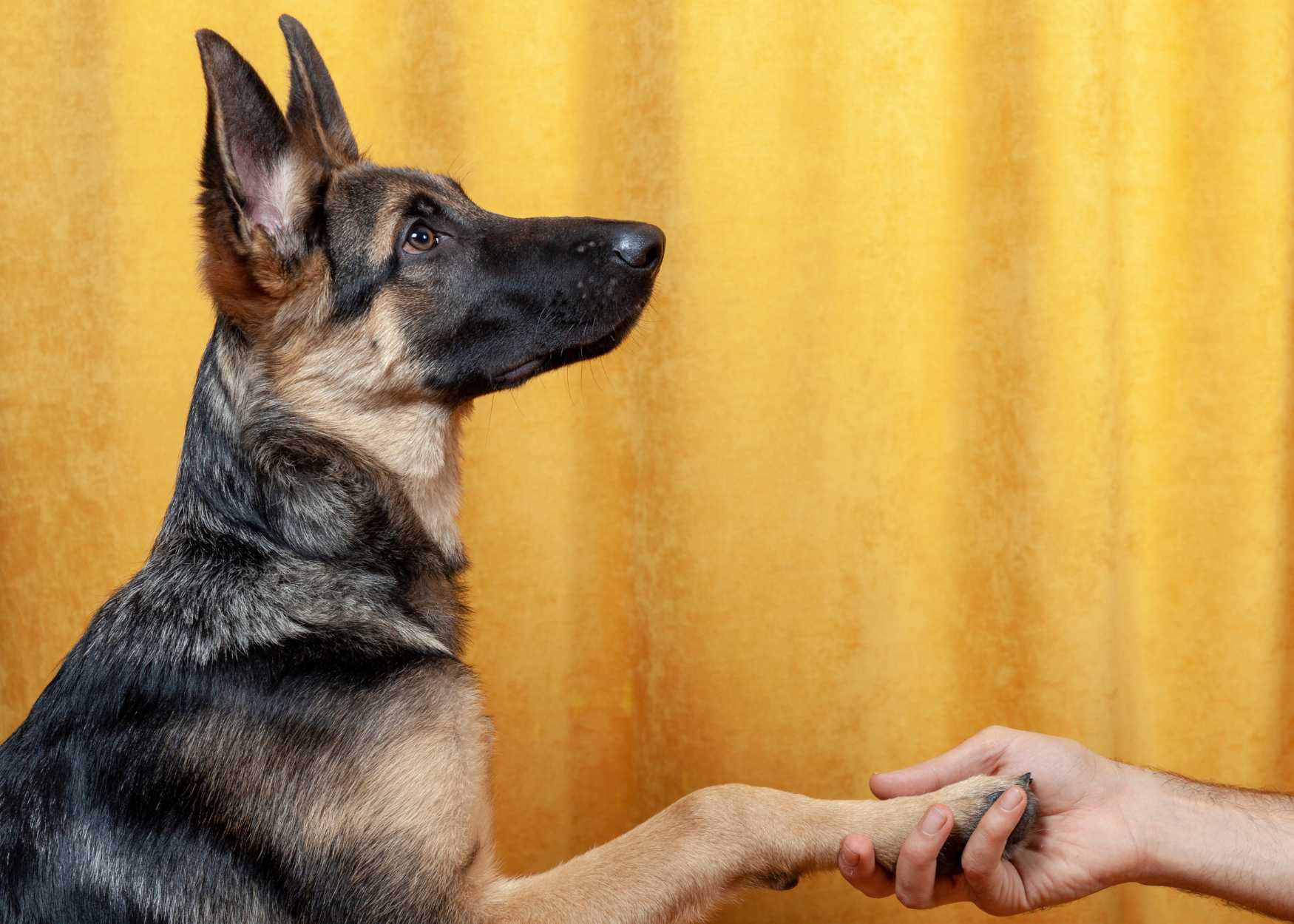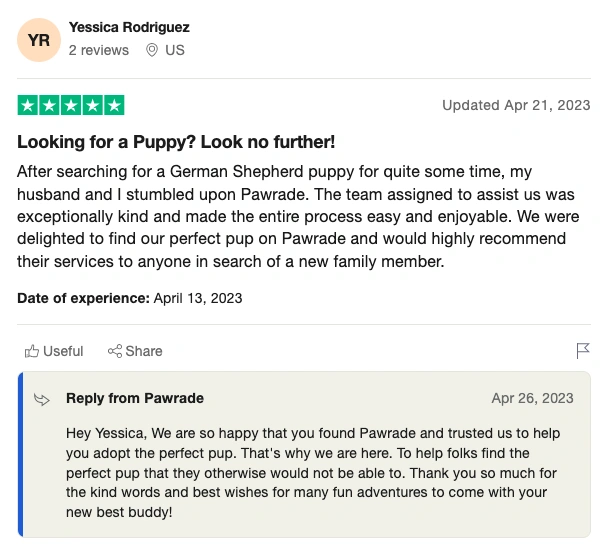When it comes to enhancing public safety, K9 dogs are invaluable assets for military and local law enforcement agencies worldwide.
On March 13, Pawrade celebrates National K9 Veterans Day to honor the courage and bravery of current and past K9 dogs that valiantly put their lives on the line to serve and protect the public. Humans have been using canines for protection for centuries, most notably in Ancient Rome and nearly every major war since. Troops benefited greatly from dogs in WWI, and the military became interested in training dogs to serve alongside the troops. Dogs officially became part of the US Armed Forces on March 13, 1942, when the Army began training dogs for its War Dog Program.
Today, there are around 50,000 K9 police dogs in the United States as of 2021 and 1,600 K9 dogs currently serving in the military who passed the US Department of Defense’s Military Working Dog Training Program, all trained at the 341st Training Squadron at Lackland Air Force Base in San Antonio, Texas.
From their unparalleled loyalty to their remarkable skills in law enforcement and beyond, discover how K9 dogs hold diverse roles in society and help maintain public safety through comprehensive training.
Which Breeds Make Great K9 Partners?
To reliably assist humans, certain dog breeds with a shared set of qualities are best suited to be K9 military and police dogs. Qualities of a K9 dog are intelligence, loyalty, bravery, agility, strength, excellent scent, and trainability. Some dog breeds that make strong K9 dogs that demonstrate all of these characteristics are:
What is a K9 Dog Trained to Do?
K9 dogs have special abilities that humans do not, which means K9 dogs are an invaluable partner in keeping communities safe. One source states one well-trained K9 officer cuts back on 600 to 1,000 man-hours each year, saving valuable resources and time that otherwise would have slowed down the ability to serve efficiently.
K9 dogs are trained for a variety of purposes to assist officers and use tracking, agility, and obedience skills. Patrol training includes searching buildings, open areas, and evidence. K9 dogs use their incredible senses to sniff out explosives, narcotics, non-native exotic species, and people, such as suspects or missing persons. They can even help match found weapons to the correct suspect.
You can expect a K9 working dog to assist their handlers in various ways:
- Community engagement
- Explosives & firearm detection
- Drug detection & enforcement
- Reducing the need for police officer use of force
- Thwart criminals (chasing, deterring, and searching)
- Finding contraband (exotic species, computer equipment, etc.)
- Funding a K9 Unit
The journey from selecting and training a K9 to maintaining their health and skills involves significant financial investment. Once a police department decides a K9 program would be a good fit, there’s the issue of how to fund this long-term investment.
How much does a K9 dog cost from a breeder?
To acquire a K9 dog, one has to find the right breeder, preferably one with a history and knowledge of the best qualities of a K9 dog to choose just the right puppy. Several K9 dogs come from specialized kennels in Europe which can start at $8,000 for the dog without extensive training.
If you’re wondering about prices that seem high, you should remember what it takes financially to produce robust puppies. The cost of being a dog breeder includes maintaining sanitary facilities, providing all healthcare for dams and puppies via a licensed veterinarian, feeding nutritious food to both dams and puppies, providing necessary supplies, marketing the puppies, and more, not to mention their expertise and knowledge – priceless when it comes to breeding suitable K9 dogs.
How much does it cost to train a K9?
Training a K9 dog for police work is a meticulous process that requires expertise and resources. After they leave their breeders, K9 dogs require both intensive initial and ongoing training. In addition to securing the right dog, the cost of K9 training programs can run between $8,000 and $15,000.
Training is not the only expense associated with K9 partners. Annual veterinary care, including vaccinations, health screenings, and preventive treatments, can amount to $1,000 to $2,500 per dog. Many police departments will also need special equipment to accommodate dogs, including dog-friendly vehicles, bulletproof body armor, wearable cameras, leashes and collars, booties to protect their paws from illegal substances or harsh terrain, and more. A high-quality, nutritious diet and a clean, secure living environment, along with the cost of a handler’s salary, will also need to be considered.
How can LEAs afford K9s on tight budgets?
While some police forces can dedicate money for the K9 unit, most budgets simply don’t have a lot of wiggle room to support a K9 program completely. Through strategic financial planning, partnerships, and community support, local law enforcement agencies (LEAs) can afford these highly trained and dedicated four-legged officers, ensuring safer streets and stronger communities.
LEAs can look to local businesses, groups, individuals, foundations, or other organizations with a history of supporting police work. Thankfully, several grants help fill the gap in funding a K9 program.
One grant available to the United States Police Canine Association (USPCA) members is through a partnership with AKC Reunite for the Adopt a K9 Cop Matching Grant Program. LEA Departments can apply for a grant that funds 75% of a requested amount up to $7,500 if the department puts in at least $2,500.
Another grant has helped the Town of Fuquay Varina, North Carolina maintain its K9 unit. Dash, a 5-year-old German Shepherd, joined the force as the first K9 dog officer in 2017. Storm, a K9 dog from Roanoke Rapids Police Department, also in North Carolina, is trained in tracking and narcotics detection. Dash and Storm received a grant from the Vested Interest in K9s, Inc. for a bullet and stab protective K9 vest. The organization gives vests to working K9s who are actively employed and at least 20 months old. Roanoke Rapids Police Chief Chuck Hasty noted, "Vested Interest's program allows law enforcement agencies to protect their K9 officer at no cost to the agencies. This not only saves us money but most importantly also protects our four-legged officers from harm.” Such generous grants help supply and fund K9 units all over the United States.
Yoda the Belgian Malinois at his retirement ceremony
Spotlight on a K9 Hero: Yoda the Belgian Malinois
While all K9 military and police dogs are heroes, here are a few stories of the valor and courage of K9 dogs protecting and serving the public.
Danelo Cavalcante, an escaped convicted killer, led more than 400 local, state, and federal law enforcement officers and dozens of aircraft searches on a 14-day manhunt after he crab-walked his way out of prison. He managed to fly under the radar, evading search parties. However, he was no match for a K9 dog. Yoda, a 4-year-old Belgian Malinois from the U.S. Border Patrol's Tactical Unit, tracked Cavalcante down and led officials to his containment and re-arrest.
Bob Dougherty is the law enforcement training director at the Penn Vet Working Dog Center. He notes that training a tactical K9 dog like Yoda begins with small scent-based tasks and increases in difficulty until they are reliable and precise when following commands. He stated, “A dog in a tactical role, like Yoda, would have to be social, calm, strong, adept at learning, not easily distractable, and able to work with more than one handler, depending on the job and agency.”
Retirement Life for K9 Dogs
Retirement marks a significant milestone for K9 dogs who have faithfully served alongside their human counterparts in police or law enforcement agencies. While these courageous canines have spent years dedicated to protecting communities, their transition into retirement deserves attention and care.
Suitability evaluations
When K9 dogs retire, they typically undergo a series of evaluations to assess their health, behavior, and suitability for adoption or placement in a loving home. These evaluations ensure that the retired K9s receive the best possible care tailored to their individual needs.
Adoption
For some retired K9s, their bond with their handler is so strong that they are adopted by their handler or another member of the law enforcement community. This familiar environment provides comfort and stability as they adjust to life after active duty. In such cases, retired K9s often continue to live fulfilling lives, enjoying well-deserved rest alongside their beloved humans.
Retired K9s may be placed with experienced adopters who understand the unique needs of these special dogs. These adopters are often carefully vetted to ensure they can provide a safe and loving home where the retired K9 can thrive in their golden years.
K9 sanctuaries
For those who are not suitable for adoption due to health or behavioral concerns, specialized retirement facilities may provide a comfortable sanctuary where they can live out their days surrounded by caring staff and fellow retired K9 companions.
Project K-9 is one organization dedicated to retired K9 dogs. Their purpose is to “ensure the best quality of life for our nation’s retired Police K-9s and Military Working Dogs by providing assistance with medical costs, prescription food, rehabilitation, rehoming, and end-of-duty services.” Their National Headquarters Rehabilitation & Rehoming Facility in Whitwell, TN boasts a 177-acre campus for homeless retired K9 dogs to live out their days well-cared for and in peace.
Protection Dog Sports
Protection dog sports, known as Schutzhund, IPO, or IGP, showcase highly trained dogs utilizing their innate instincts to safeguard handlers in various scenarios like searches and attacks. K9 dogs are perfect for this dog sport thanks to their prior background training, intelligence, and eagerness to please their owners. With four levels of difficulty, these sports demand unwavering focus and obedience, offering dogs a chance to excel while reinforcing their training.
Continuing to help others
Some retired K9s find second careers as therapy dogs, service dogs for individuals with disabilities, or participate in educational programs to raise awareness about the vital role of working dogs in society. These new roles allow retired K9s to continue making a positive impact on the lives of others even after their days of active duty are over.
Search For Your Next Dog at Pawrade
Help us celebrate National K9 Veterans Day! If your local LEA has a K9 dog unit, consider expressing your thanks with a heartfelt message, a meet-and-greet, or a donation of items in need. Speaking of need, if you are interested in a puppy with the qualities of a working K9 dog, Pawrade offers puppies for sale that share the same characteristics of bravery, intelligence, and unwavering loyalty. We hope to speak with you soon!




